1 - Plate Tectonics
1/32
Earn XP
Description and Tags
To be accompanied with past exam questions
Name | Mastery | Learn | Test | Matching | Spaced |
|---|
No study sessions yet.
33 Terms
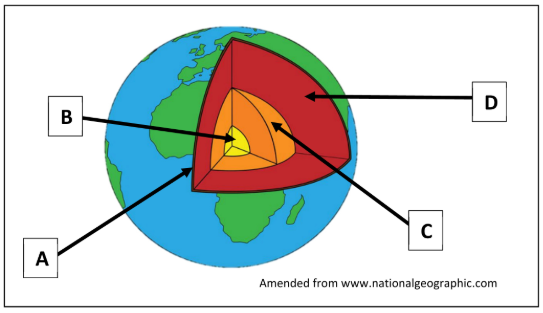
Name each of the layers of the earth labelled A, B, C and D
A: Crust
B: Inner core
C: Outer core
D: Mantle
Name four tectonic plates you have studied
Eurasian, Nazca, North American, South American, African
What is the term for molten rock under the surface of the earth?
Magma
Name the two main minerals found in the core
Iron
Nickel
Name the process by which one tectonic plate is forced under another
Subduction
Explain briefly how tectonic plates move
Tectonic plates are moved by convection currents that occur in the earth’s mantle.
Magma rises from the core and flows sideways as it cools

Name the tectonic plates A, B, C and D
A: Nazca plate
B: Eurasian plate
C: South American plate
D: Pacific plate
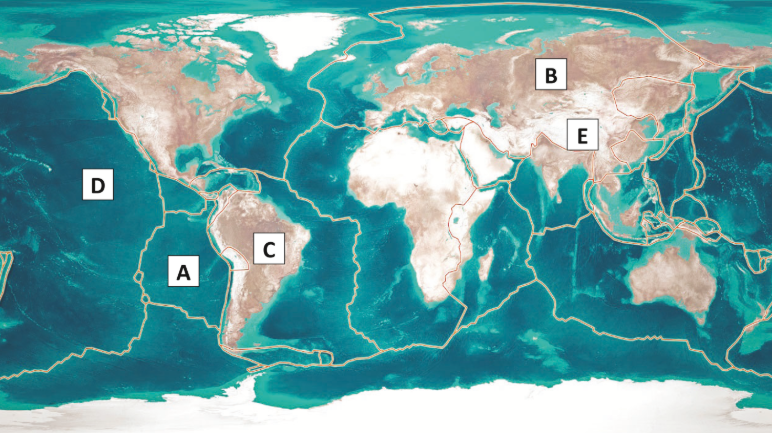
Identify the type of plate boundary that exists between plates A and C
Destructive / Convergent
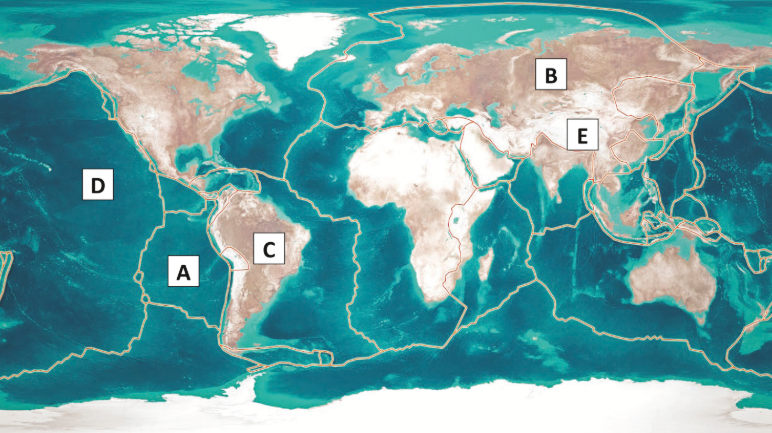
Name the mountain range that has formed at E
Himalayas
Explain the difference between the earth’s lithosphere and the earth’s asthenosphere
The lithosphere consists of earth’s curst and solid upper mantle //
The asthenosphere is the uppermost part of the liquid lower mantle
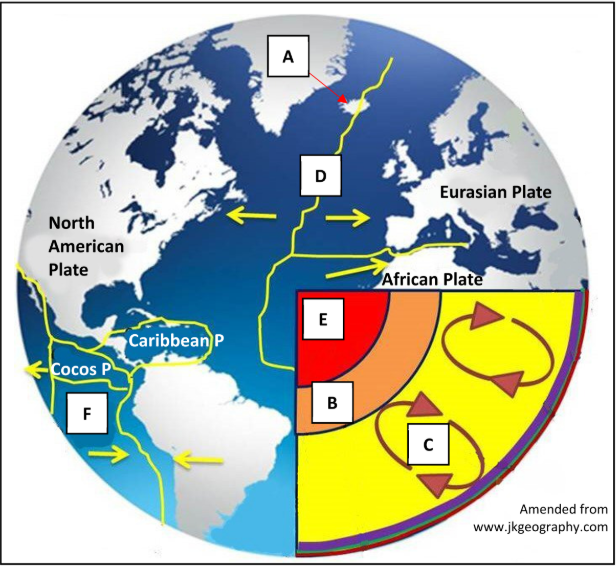
Match each of the letters A, B, C, D, E and F with the term that best matches it in the table below
Convection currents:
Inner core:
Outer core:
Nazca plate:
Volcanic island:
Divergent plate boundary:
Convection currents: C
Inner core: E
Outer core: B
Nazca plate: F
Volcanic island: A
Divergent plate boundary: D
What is the name for the solid layer of rock around the earth which consists of the upper mantle and the crust?
Lithosphere
What type of igneous rock is most commonly formed along mid-ocean ridges?
Basalt
Explain briefly what is meant by the term Moho line
The boundary between the crust and mantle of the earth
Endogenic forces
Forces which occur within the Earth’s surface
Exogenic forces
Forces which occur on the Earth’s surface
Explain briefly what is meant by the term sea floor spreading
Process in which tectonic plates split apart from each other on the ocean floor. This results in the formation of mid-ocean ridges and volcanic islands.
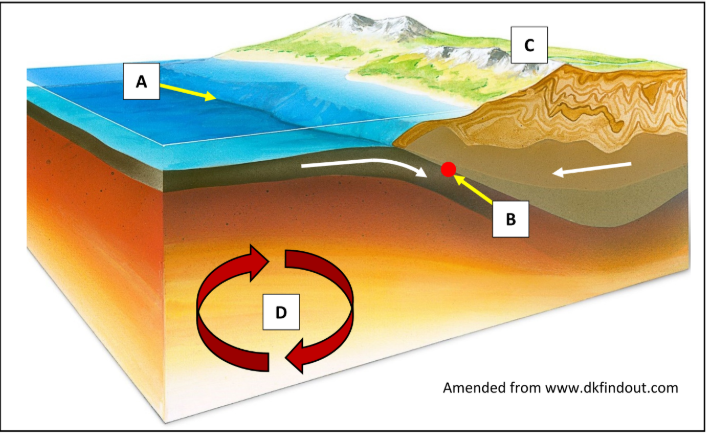
Match each of the letters A, B, C and D with the term that best matches it in the table below
Convection currents:
Ocean trench:
Fold mountains:
Focus of an earthquake:
Convection currents: D
Ocean trench: A
Fold mountains: C
Focus of an earthquake: B
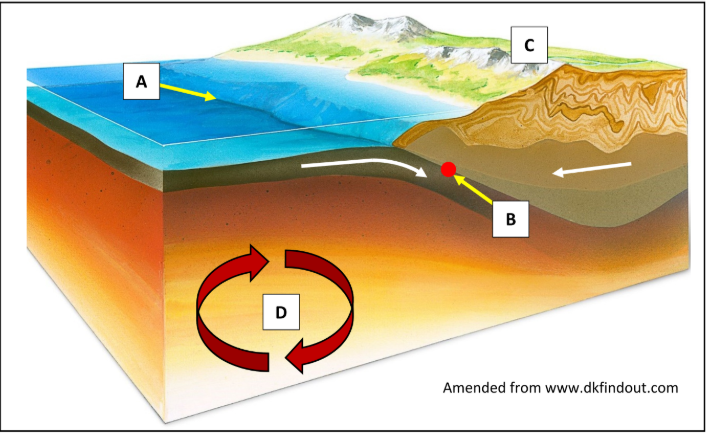
Name the type of plate boundary illustrated in the diagram above
Destructive / convergent
Name one example of a mountain range formed by folding found outside of Ireland
Alps, Himalayas, Rockies, Andes
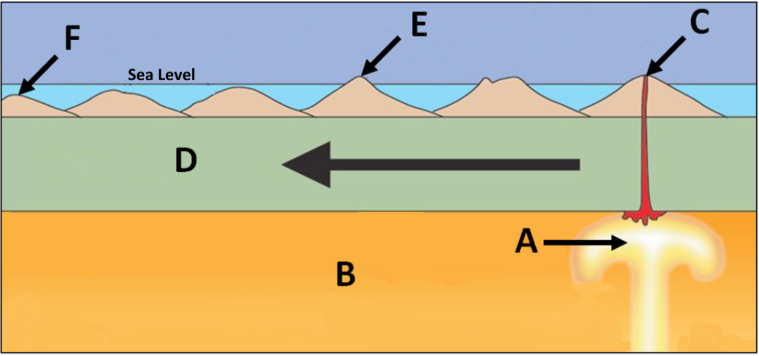
Match each of the letters A, B, C, D, E and F on the diagram with the description in the table below that best matches it
Oceanic crust:
Extinct volcano visible above the water’s surface:
Active volcano:
Asthenosphere:
Oldest extinct volcano:
Plume of magma:
Oceanic crust: D
Extinct volcano visible above the water’s surface: E
Active volcano: C
Asthenosphere: B
Oldest extinct volcano: F
Plume of magma: A
Name one example of a volcanic hot spot that you have studied
Hawaii
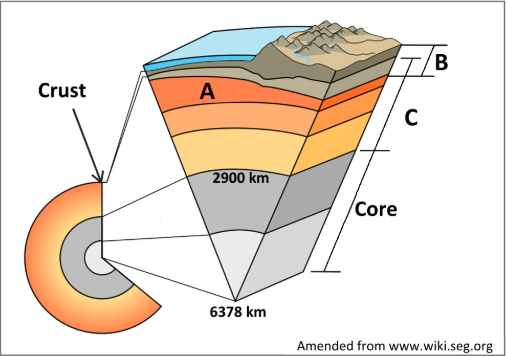
Name each of the layers of the earth labelled A, B and C
A: Asthenosphere
B: Lithosphere
C: Mantle
What name is given to the boundary between the crust and the mantle?
Moho discontinuity
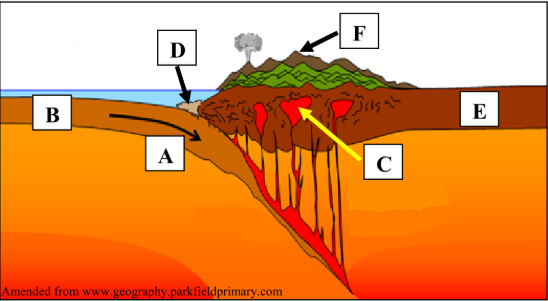
Match each of the letters A, B, C, D, E and F with the feature that best matches it in the table below
Continental crust:
Oceanic trench:
Mountain range:
Oceanic crust:
Subduction zone:
Magma chamber:
Continental crust: E
Oceanic trench: D
Mountain range: F
Oceanic crust: B
Subduction zone: A
Magma chamber: C
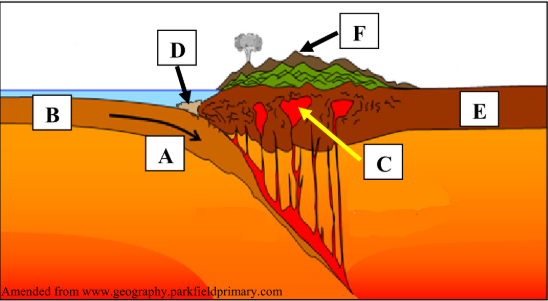
True or false:
Plutonic igneous rocks are formed at C
True
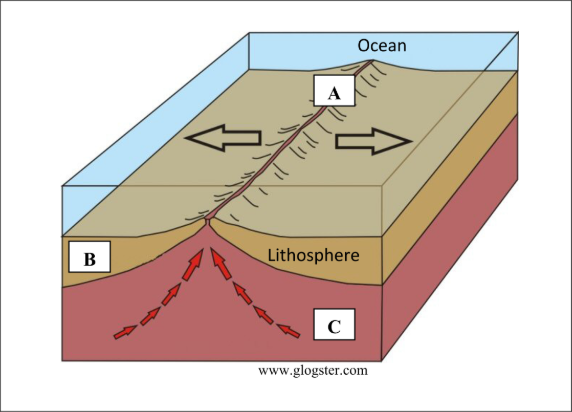
Name the type of plate boundary illustrated in the diagram
Constructive / divergent
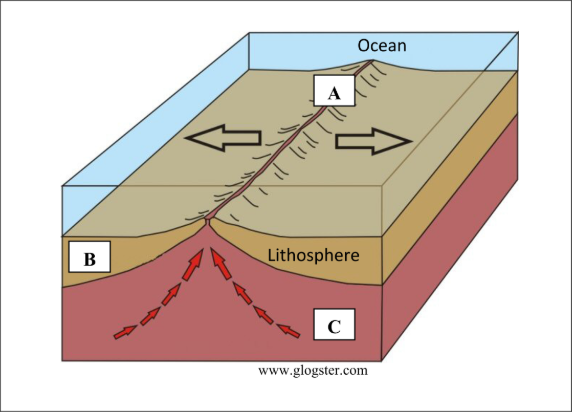
Name the feature at A
Mid-ocean ridge
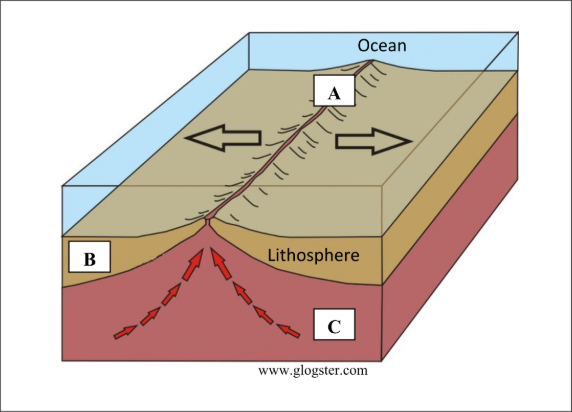
Name an igneous rock formed at B
Basalt
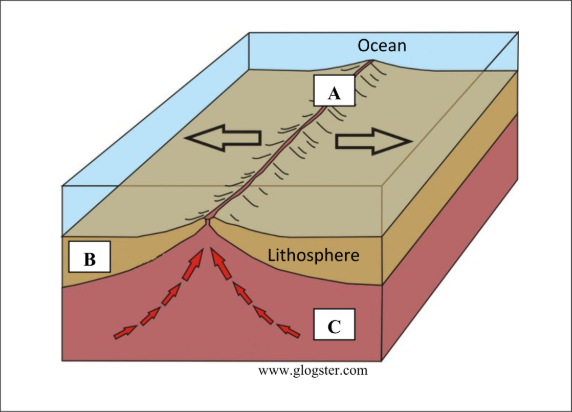
Name the part of the upper mantle at C
Asthenosphere

Name the types of plate boundaries at E and at F
E: Constructive / divergent
F: Passive
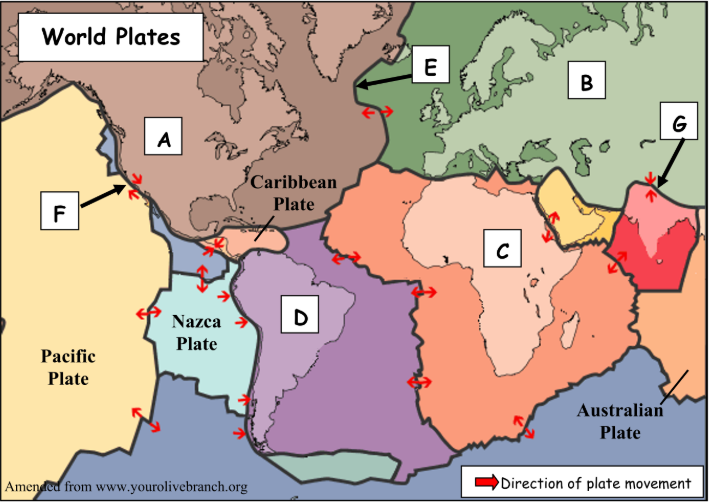
True or False:
Volcanic mountains are formed at E
True
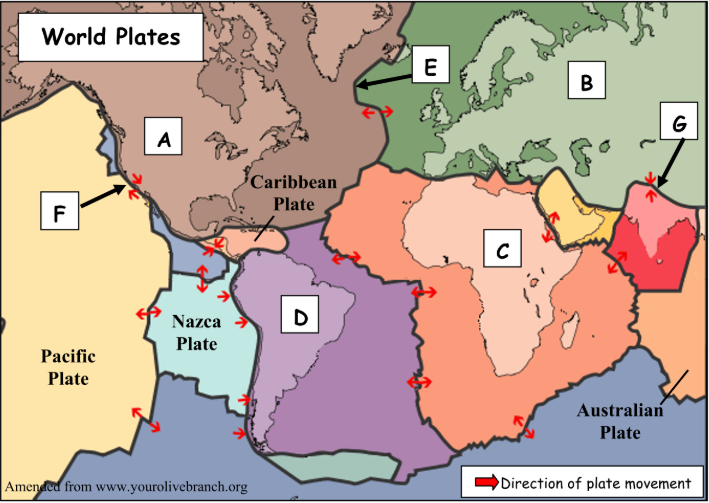
True or false:
Fold mountains are formed at G
True